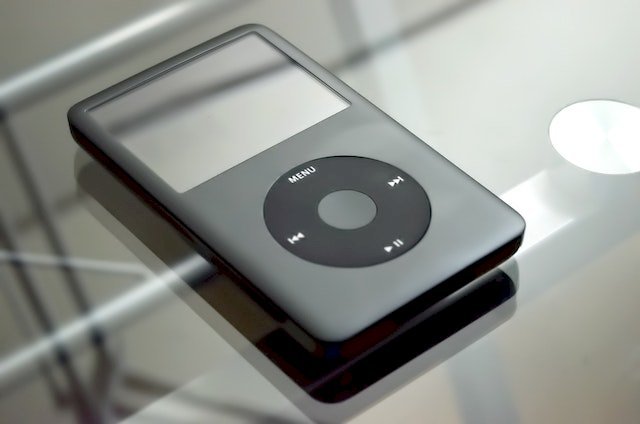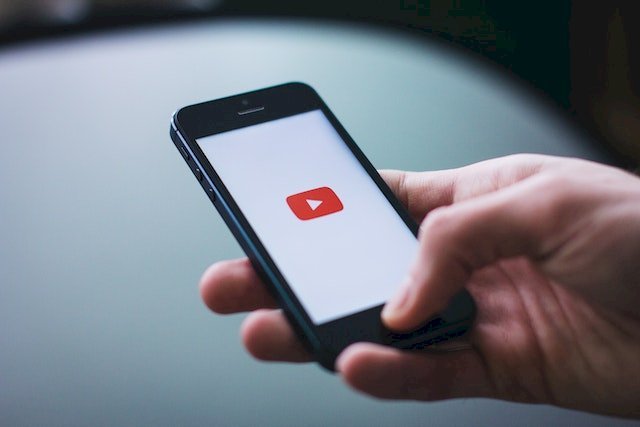YouTube MP3 Conversion: Tools, Risks, and Alternatives
Learn about YouTube MP3 conversion methods, the risks involved, and explore legal alternatives to enjoy your favorite music. Stay informed and make responsible choices.

Introduction
A. Explanation of YouTube MP3 conversion
YouTube MP3 conversion refers to the process of converting audio content from YouTube videos into the MP3 format. MP3 is a widely used audio file format that offers a good balance between audio quality and file size, making it suitable for storing and sharing audio content. This conversion allows users to extract the audio track from YouTube videos and save it as an MP3 file that can be played on various devices, such as smartphones, computers, and MP3 players.
The process typically involves using specialized software or online tools that can extract the audio from a YouTube video and convert it into an MP3 file. Users can then download and save the MP3 file for personal use, including listening offline, creating playlists, or sharing with others.
B. Importance and use cases
YouTube MP3 conversion has gained significant importance due to its various use cases and benefits:
- Offline Listening: One of the primary use cases is enabling users to listen to their favorite music or audio content offline, even when an internet connection is not available. This is particularly useful for people who want to enjoy their preferred content while traveling or in areas with poor connectivity.
- Portability: MP3 files are lightweight and widely compatible with a range of devices, making it easy for users to carry their favorite audio content with them. Whether it's on a smartphone, tablet, or an MP3 player, MP3 files are versatile and easy to manage.
- Custom Playlists: Converting YouTube videos to MP3 allows users to create custom playlists of their favorite songs or audio content. This is especially popular for music enthusiasts who want to curate their own collections.
- Educational and Research Purposes: Academics and researchers can extract audio content from YouTube videos for educational and research purposes. This includes transcribing content, analyzing speeches, and incorporating audio clips into presentations or papers.
- Content Preservation: Some users convert YouTube content into MP3 format to preserve it for future reference, as videos on YouTube may be removed or made private over time.
- Legal Considerations: It's essential to note that while YouTube MP3 conversion can be a valuable tool, it must be done in compliance with copyright and intellectual property laws. Users should ensure they have the necessary rights or permissions to convert and use copyrighted content.

Legal and Ethical Considerations
A. Copyright issues
YouTube MP3 conversion can raise significant copyright concerns, as it involves making copies of copyrighted audio content without the explicit permission of the content owner. Copyright law protects the rights of creators, and converting YouTube videos into MP3 files may infringe on those rights, particularly if the content is not intended for free distribution.
It's essential to consider the following copyright issues:
- Fair Use: Copyright law may allow for "fair use" of copyrighted material for purposes such as criticism, commentary, news reporting, teaching, or research. However, the definition of fair use is complex and can vary by jurisdiction. Users should be cautious and consult with legal experts if they believe their use falls under fair use.
- Public Domain: Some content on YouTube is in the public domain, which means it's free to use without restrictions. Users should verify the copyright status of the content they intend to convert.
- Creative Commons: Some content on YouTube is licensed under Creative Commons, which may allow for reuse under specific terms and conditions. Users should adhere to the licensing terms associated with such content.
- Terms and Conditions: YouTube's terms of service prohibit downloading content without explicit permission, and violating these terms could lead to the suspension or termination of a user's account.
B. Terms of Service compliance
YouTube's terms of service are clear about downloading content from the platform. These terms prohibit downloading videos or extracting audio without explicit permission from YouTube or the content owner. Users should be aware that violating these terms may result in penalties, including the suspension or termination of their YouTube accounts.
It's crucial to respect these terms and use YouTube in a manner consistent with its policies. If users are uncertain about whether a specific use case is allowed, they should seek legal advice or consult YouTube's official guidelines.
Related Article: Fzmovies: Your Gateway to the World of Movies
C. Fair use guidelines
Fair use is a complex and often context-specific concept in copyright law. It permits the use of copyrighted material without permission from the copyright holder under certain conditions, such as for criticism, commentary, news reporting, teaching, or research. However, fair use considerations can be subjective and depend on factors like the purpose of use, the nature of the copyrighted work, the amount used, and the effect on the market for the original work.
When converting YouTube content into MP3 format, users should consider whether their use qualifies as fair use. To determine this, they may need to seek legal counsel, as fair use determinations can be legally intricate.
Methods of YouTube MP3 Conversion
A. Online converters
Online converters are web-based tools that allow users to convert YouTube videos into MP3 files without the need for any software installation. Here's how they typically work:
- Copy URL: Users first need to copy the URL of the YouTube video they want to convert.
- Paste URL: They then paste the video's URL into the online converter's input field.
- Choose Format: Some online converters offer various output formats, but for MP3 conversion, users typically select "MP3."
- Start Conversion: After selecting the desired format, users initiate the conversion process, and the online tool extracts the audio and converts it into an MP3 file.
- Download: Once the conversion is complete, users can download the MP3 file to their computer or device.
Online converters are convenient and accessible but may have limitations in terms of speed, conversion quality, and the number of videos that can be converted without registration or payment.
B. Desktop software
Desktop software provides a more robust and feature-rich solution for YouTube MP3 conversion. Users can install these applications on their computers, and they often offer additional features such as batch conversion and higher-quality audio extraction. Here's how desktop software typically works:
- Download and Install: Users first need to download and install the YouTube to MP3 conversion software on their computer.
- Copy URL: Similar to online converters, users copy the URL of the YouTube video they want to convert.
- Paste URL: They paste the video's URL into the software.
- Choose Settings: Users can often choose the output format, quality, and destination folder for the converted MP3 files.
- Start Conversion: After configuring the settings, users initiate the conversion process.
- Manage and Save: Desktop software often allows users to manage and organize their converted MP3 files and save them to a designated location on their computer.
Desktop software tends to offer more control and customization options, making it suitable for users who require high-quality conversions or intend to convert large batches of videos.

C. Browser extensions
Browser extensions are add-ons or plugins that users can install in their web browsers. These extensions facilitate YouTube MP3 conversion directly from the YouTube video page. The process typically involves the following steps:
- Install Extension: Users need to install the browser extension specific to their web browser (e.g., Chrome, Firefox).
- Visit YouTube: After installation, users can go to a YouTube video they want to convert.
- Click Extension Icon: A browser extension icon or button on the video page allows users to initiate the conversion process.
- Choose Options: Users can often select the output format, quality, and other options.
- Start Conversion: The extension processes the video and converts it into an MP3 file.
- Download: Once the conversion is complete, users can typically download the MP3 file.
Browser extensions are convenient for quick conversions without leaving the YouTube website, but their features and reliability can vary depending on the specific extension.
D. Mobile apps
For mobile devices, there are various apps available for YouTube MP3 conversion. These apps can be installed on smartphones and tablets, and the process is similar to desktop software or online converters:
- Install App: Users need to download and install a YouTube MP3 conversion app from their respective app store.
- Copy URL: Copy the URL of the YouTube video you want to convert.
- Paste URL: Paste the video's URL into the app.
- Select Options: Users can typically choose the output format and quality.
- Start Conversion: Initiate the conversion process within the app.
- Save or Share: Once the conversion is complete, users can save the MP3 file on their mobile device or share it with other apps.
Mobile apps provide a mobile-friendly solution for users who want to convert YouTube videos into MP3 files on the go.
In summary, YouTube MP3 conversion can be done through various methods, including online converters, desktop software, browser extensions, and mobile apps. The choice of method depends on the user's specific needs, such as quality requirements, batch conversions, and convenience.
Risks and Concerns of YouTube to MP3 Conversion
A. Malware and Security Risks
Converting YouTube videos to MP3 files through third-party websites or software can expose users to various malware and security risks. Here are some key points to consider:
- Untrusted Sources: Many YouTube to MP3 conversion websites and tools are hosted on untrusted or poorly regulated platforms. Users may inadvertently download malicious software when using such services.
- Malicious Ads: These platforms often display aggressive and deceptive advertisements that can lead to malware infections or phishing attempts.
- Privacy Concerns: Some conversion tools might require users to provide personal information or grant unnecessary permissions, which can lead to privacy breaches.
- Infection Risks: Downloaded MP3 files could be embedded with malware or viruses, putting your device at risk.
To mitigate these security concerns, it's crucial to only use reputable and verified YouTube to MP3 conversion services. Additionally, maintaining up-to-date antivirus software and being cautious while navigating such platforms can help safeguard your digital security.
B. Quality and Format Issues
Converting YouTube videos to MP3 files can lead to quality and format issues that affect the listening experience. Here are some considerations:
- Audio Quality: The audio quality of a converted MP3 file may not match the original video, as it depends on the source's video and audio quality. Lower quality source videos will result in lower quality MP3 files.
- Lossy Compression: Most MP3 files use lossy compression, which means that some audio data is discarded to reduce file size. This can lead to a loss of audio fidelity.
- Incorrect Metadata: Some conversion tools might not correctly embed metadata (e.g., artist, album, and track information) in the MP3 file, making it challenging to organize your music library.
To address these concerns, you can consider using higher bitrates when converting videos to MP3, which may improve audio quality. Moreover, ensure that the metadata is accurate by manually editing it or using dedicated software.
C. Impact on Content Creators
YouTube to MP3 conversion can have a significant impact on content creators, as it can lead to potential revenue loss and copyright issues:
- Copyright Violations: Converting and distributing copyrighted content without permission can infringe upon the rights of content creators. This can result in takedown notices, legal actions, and penalties.
- Revenue Loss: Content creators often rely on advertising revenue and streaming platforms to monetize their content. Converting YouTube videos to MP3s can divert traffic away from these platforms, reducing their potential earnings.
- Reduced Exposure: Content creators benefit from their content being widely accessible on YouTube. When users download content and listen offline, it reduces the visibility of the original video.
To support content creators and respect copyright laws, it's advisable to use legitimate means to access music and support artists through official streaming services or purchasing their content.
Alternatives to YouTube MP3 Conversion
A. Legal Streaming and Downloading Services
Rather than engaging in YouTube MP3 conversion, consider using legal streaming and downloading services that offer a wide range of music and video content. These platforms provide a legitimate way to access music while supporting artists and content creators. Here are some popular options:
- Spotify: Spotify offers a vast library of songs and podcasts for free (with ads) or through premium subscriptions. Users can create playlists, download music for offline listening, and discover new artists.
- Apple Music: Apple Music provides a large music catalog and integrates seamlessly with Apple devices. Subscribers can stream, download, and curate their music libraries.
- Amazon Music: Amazon Music offers various plans, including Amazon Music Unlimited, which provides access to a vast library of songs and albums. Subscribers can also download music for offline use.
- Google Play Music/YouTube Music: Google Play Music has transitioned into YouTube Music. This service allows users to listen to music, watch music videos, and discover new content. It offers free and premium subscription options.
- Tidal: Tidal focuses on high-quality audio and exclusive content. Subscribers can enjoy lossless audio streaming and unique artist offerings.
- Deezer: Deezer provides an extensive music catalog and offers personalized playlists and recommendations. Users can also download music for offline listening.
- SoundCloud: SoundCloud is a platform for both emerging and established artists to share their music. Users can discover new tracks, follow their favorite artists, and save music for offline listening.
- Pandora: Pandora offers personalized radio stations based on user preferences. While it has a free version with ads, Pandora Plus and Premium provide ad-free listening and additional features.
B. Subscription-Based Music Platforms
Subscription-based music platforms offer a premium experience with additional features, such as offline downloads, higher audio quality, and exclusive content. By subscribing to these services, you directly support the artists and content creators. Some notable options include:

- Spotify Premium: Spotify Premium removes ads, allows offline downloads, and provides higher audio quality. It also offers exclusive content and early releases.
- Apple Music: Apple Music's subscription service offers ad-free streaming, offline downloads, and access to the entire music library. It integrates seamlessly with Apple devices.
- Amazon Music Unlimited: Amazon's premium subscription provides unlimited access to a vast music catalog, offline downloads, and enhanced sound quality. It's compatible with Amazon Echo devices.
- YouTube Premium: YouTube Premium allows ad-free viewing of all YouTube content, including music videos. Subscribers can also download videos and music for offline use.
- Tidal HiFi: Tidal HiFi offers high-fidelity audio streaming with lossless sound quality. It includes exclusive content, early releases, and offline downloads.
- Deezer Premium: Deezer Premium provides ad-free listening, offline downloads, and access to high-quality audio. It also offers a family plan for multiple users.
- SoundCloud Go+: SoundCloud Go+ offers offline listening, no ads, and access to an extended music catalog on SoundCloud.
These legal streaming and subscription-based platforms offer a wide variety of music and features to cater to different preferences. By using these services, you support artists, content creators, and the music industry while enjoying a seamless and high-quality music experience.
Conclusion
In summary, this discussion has highlighted the potential risks and concerns surrounding YouTube to MP3 conversion, including security issues and impacts on content creators, while also providing guidance on responsible alternatives for accessing music. It is essential to exercise caution when using conversion tools, respect copyright laws, and favor legal streaming services to enjoy music while supporting the music industry and its artists responsibly.






